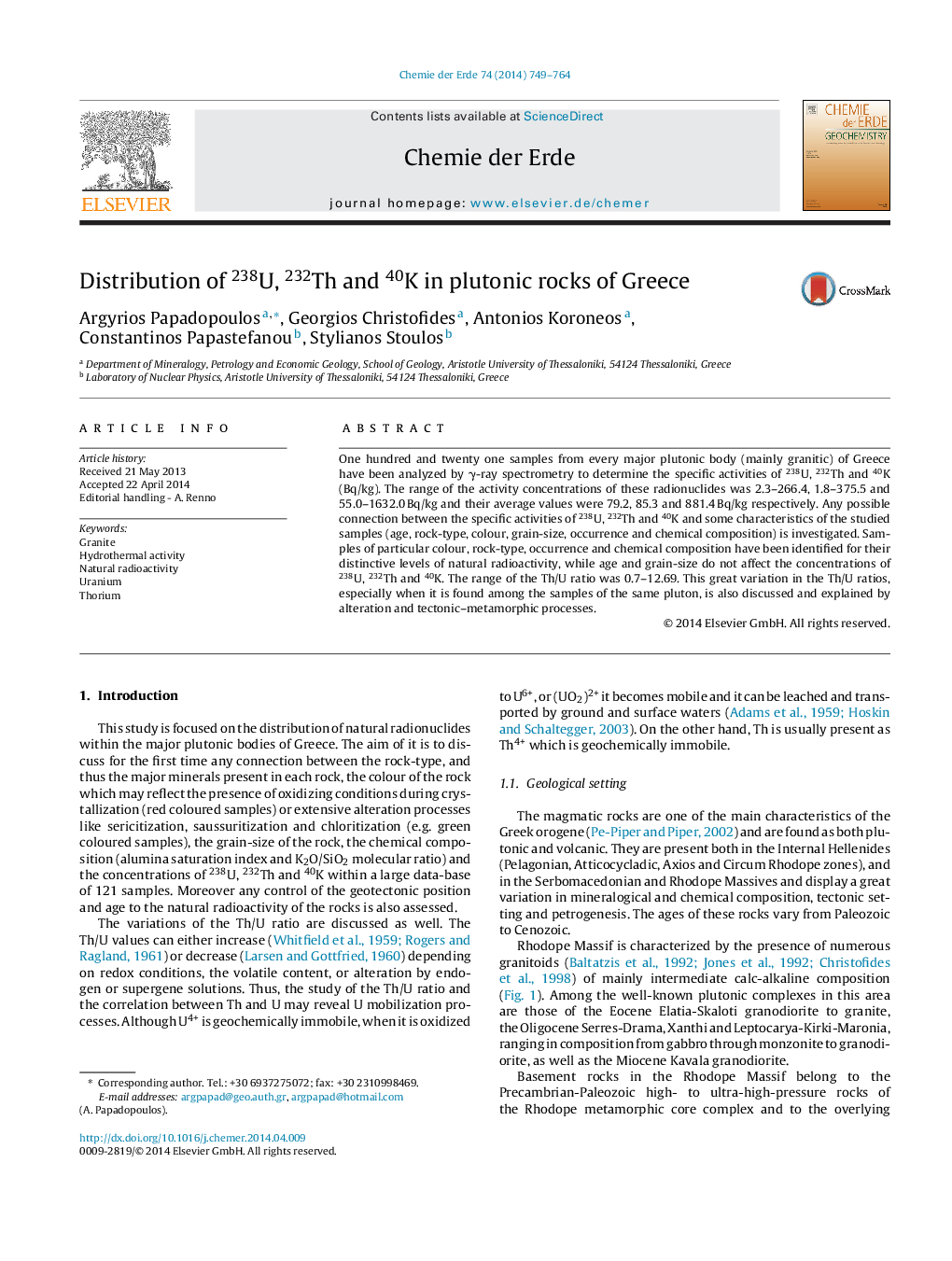| Article ID | Journal | Published Year | Pages | File Type |
|---|---|---|---|---|
| 4406957 | Chemie der Erde - Geochemistry | 2014 | 16 Pages |
Abstract
One hundred and twenty one samples from every major plutonic body (mainly granitic) of Greece have been analyzed by γ-ray spectrometry to determine the specific activities of 238U, 232Th and 40K (Bq/kg). The range of the activity concentrations of these radionuclides was 2.3-266.4, 1.8-375.5 and 55.0-1632.0 Bq/kg and their average values were 79.2, 85.3 and 881.4 Bq/kg respectively. Any possible connection between the specific activities of 238U, 232Th and 40K and some characteristics of the studied samples (age, rock-type, colour, grain-size, occurrence and chemical composition) is investigated. Samples of particular colour, rock-type, occurrence and chemical composition have been identified for their distinctive levels of natural radioactivity, while age and grain-size do not affect the concentrations of 238U, 232Th and 40K. The range of the Th/U ratio was 0.7-12.69. This great variation in the Th/U ratios, especially when it is found among the samples of the same pluton, is also discussed and explained by alteration and tectonic-metamorphic processes.
Related Topics
Physical Sciences and Engineering
Earth and Planetary Sciences
Geochemistry and Petrology
Authors
Argyrios Papadopoulos, Georgios Christofides, Antonios Koroneos, Constantinos Papastefanou, Stylianos Stoulos,
